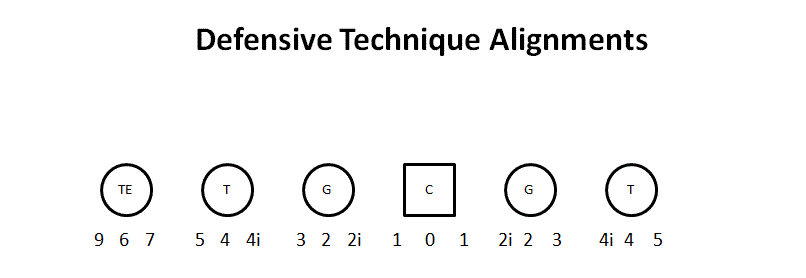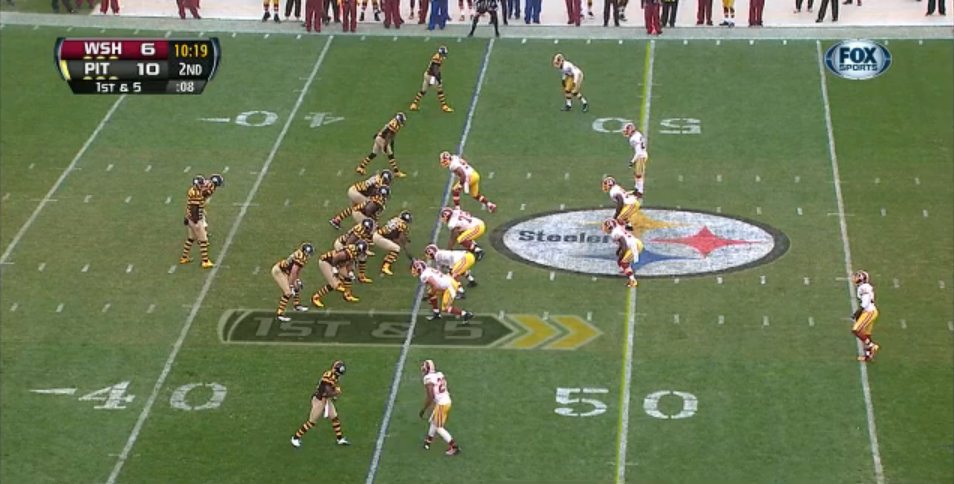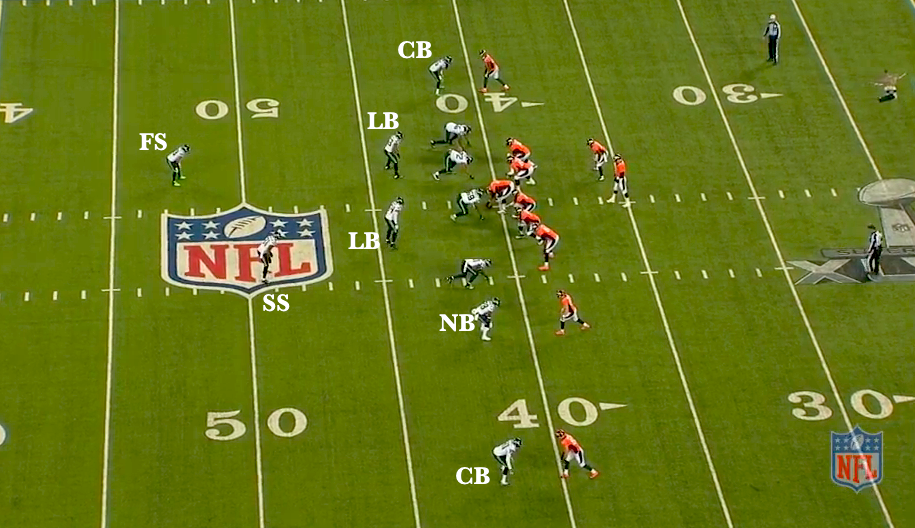Modern football fans are smart,
and they keep getting smarter. Most people who watch football on a regular
basis know what you’re talking about when you refer to a blitz, or to play
action, or to a nickel defense. Commentators are going more in depth with their
analysis every year, and the growth of internet blogs like this one has made
it easier for fans to find in depth analysis. But there is still so much more
about football out there, so much that even I don’t fully understand. This is a
beautifully complex game, with nuances of technique and scheme that most fans
aren’t aware of. So strap yourselves in as I take you on a highly technical
tour of NFL defenses.
Note: As I said above, I don’t
know everything. I never played football above a high school level, and several
of the things I’m discussing below were never handled in my high school’s
defense. It is very possible that some of my readers know more than me on these
topics. If I’m wrong about something, feel free to leave a comment so I can
correct it. I would love nothing more than to learn even more about football.
Linemen Positioning
The terminology for the
positioning of defensive linemen has been around in football for decades, but
it has only recently become common in the vocabulary of casual football fans.
It is a fairly straightforward numbering scheme, shown the diagram
below. The numbers increase out in a mirrored pattern from the center. The even
numbers represent a defensive player lining directly in front of an offensive
lineman—0 for the center, 2 for a guard, 4 for a tackle, and 6 for a tight end
(if present.) The odd numbers fill in the gaps in between, though they
technically refer to the outside shoulders of the respective linemen. As you
can see, the numbers get a little messed up out around the edge, but on the
interior it is mostly easy to figure out. Teams sometimes focus on finer
details and will add the letter “i” to an even number to indicate the inside
shoulder of an offensive linemen.

This terminology has been used in
several contexts over the past few years. The most common is when describing
the smaller, quicker defensive tackle in a 4-3 scheme. This defensive tackle is
commonly known as “the 3-technique” since that is where he lines up in most
normal alignments. Another common usage is when discussing a defensive end in
the “Wide 9” position. As the name suggests, this indicates an end lining up
far outside the tackle box. This offers a lot of advantages as a pass rusher,
but it takes the ends out of the run game, opening up a massive lane for backs
to run through. To play this sort of defense a team needs extremely stout
linebackers, and it is normally used only in obvious passing situations.
One Gap
There are two main techniques
employed by defensive linemen. The first and simplest of these is “one
gapping.” A one gap scheme is all about pressure, relying on a defensive
lineman to control a single gap by penetrating into the backfield. Linemen in
this scheme are usually required to be explosive off the ball and to know how
to disengage with blockers off initial contact. They are typically smaller and
quicker than linemen who engage with blockers. Most of the linemen who
consistently make plays in the backfield do so running a one gap scheme,
allowing them the freedom to be aggressive and use their speed to shoot past an
offensive lineman.
As you would expect, one gapping
has its strengths and weaknesses. It can blow up traditional running schemes,
penetration often making it impossible for backside linemen to pull around and
contribute to the play. But it can cause problems against a zone running
scheme, where blockers are perfectly content to let a defender run himself out
of the play to give the runner an open lane to cut through. The one major advantage one gapping
offers is against the pass, where penetrating defensive linemen can present
quick pressure in the face of the quarterback. Edge pressure causes plenty of
problems, but pressure directly in front of the quarterback can be even worse,
giving him no time to make decisions and preventing him from being able to see
downfield.
Two Gap
Two gapping
is essentially the opposite of one gapping. In this scheme a defensive lineman
is responsible for both the gaps on either side of him, and it is up to him to
prevent the blockers from pushing him in a way that he can’t engage with a
runner coming through either gap. He needs to use his size and his hands to
establish control off the snap of the ball, standing the opposing lineman up
and trying to push him into the backfield rather than trying to run around him.
If he can gain proper control, he should be able to cast the blocker aside in
either direction once he knows where the play is going.
Two gapping is what most people
think of when they imagine defensive linemen, particularly defensive tackles.
It requires someone who is big and stout (aka fat) to hold his ground and to
allow the linebackers to scrape through the holes. It prevents the defensive
linemen from making many plays, but it allows for a more cohesive, technically
sound defense. It
doesn’t provide much in the way of a pass rush, but the best defensive tackles
can shove linemen back to collapse the pocket, giving the quarterback less room
to escape from the edge rushers.
Stunt
There is another important
technique used by the defensive front that I need to bring up, and that is
stunting. A stunt is a called play intended to confuse an offense’s blocking
scheme by switching the responsibilities of the defenders. The simplest form of
a stunt is a cross, as shown in the image below. One lineman—in this case the
defensive end—will crash hard across the blocker beside him, shooting into the
gap between him and the defensive tackle. His goal is to draw the blocker ahead
of him towards this gap while the tackle loops around and races through the
open hole. The lineman responsible for the defensive tackle won’t be able to
fight through the muddle, and unless his teammate can recognize and make the
switch the defensive tackle will have a clear lane into the backfield. If he’s smart about
it, the defensive end can even get away with grabbing hold of the outside
offensive lineman to prevent him from sliding out and picking up the defensive
tackle.
There are many varieties of
stunts between the line and the linebackers. A crashing defensive linemen will
often try to occupy two blockers while a linebacker blitzes in behind him.
Stunts are effective against either the run or the pass, though they can also
create easy leverage for an offensive lineman to use in the running game. They
are better off used by teams without elite defensive linemen, who struggle to
win individual matchups. If at all possible, teams are probably better off just
letting their defensive linemen play the gaps in front of him.
3-4 vs 4-3
There has been a lot made about
the differences in defensive schemes. Whenever a team struggles on defense,
they usually bring in a new coach who promises a switch to a new alignment,
exciting fans over all the possibilities. In truth, there is very little
functional difference in schemes any longer. Traditionally, the 3-4 defense
asked its defensive linemen to play primarily as two gappers, leaving its
linebackers free to make more plays. But as the passing game has grown, 3-4
teams have begun to ask for more penetration from their defensive linemen,
leading to the development of playmaking 3-4 ends like JJ Watt and Muhammad Wilkerson. And
now that teams play most of their snaps with nickel personnel both schemes end
up looking a lot alike.
Here’s Washington, a 3-4 team in
the nickel.

And here’s Seattle, a 4-3 team in
the nickel. See the difference?

When going to the nickel, a 4-3
team normally takes a linebacker off the field. When going to the nickel, a 3-4
team normally takes a defensive lineman off the field and moves their edge linebackers
up onto the line. The only difference is whether the outside players go down
into a 3-point stance or remain standing in a 2-point stance. So the next time you hear someone
freaking out about the change from a 4-3 to a 3-4 or vice versa, try not to
laugh too hard.
Zone Blitz
Blitzes have been around since
the beginning of football, and most casual fans understand how they work. At
the snap of the ball one of the linebackers rushes towards the line of
scrimmage, attempting to shoot into the backfield to disrupt the play. Normally
linebackers are supposed to read and react, but on blitzes they become
aggressors like the linemen in front of them. Blitzes are useful for creating
pressure on the quarterback and for breaking down the blocking scheme of a
running game.
There is one major downside to
blitzing on a pass play. Bringing an extra rusher means one fewer man in
coverage, and for a team that wants to play a zone coverage scheme this puts an
extra burden on every defender on the field. No offensive line can hold against
a blitz indefinitely, but if they can weather the initial rush the quarterback
usually has time to find a hole in the zone. Normally teams try to avoid this
by playing man coverage, but in the past couple decades teams have found a way
to disrupt pass protection without sacrificing the ability to play zone.
The sneaky secret behind a zone
blitz is that it often isn’t technically a blitz. Like a normal blitz, one of
the linebackers will rush into the backfield at the snap of the ball, leaving
the other defenders behind him to play in coverage. But unlike on a normal
blitz, on a zone blitz one of the defensive lineman will not rush the passer.
Instead he will drop back into coverage, filling the zone that would normally
be taken by the linebacker. The decrease in coverage ability is made up for by
the confusion sown by the presence of the extra rusher and the man dropping
into coverage where the quarterback isn’t expecting him, leading to plays like
the one below.

Coverages
There are three primary
categories of coverage schemes, all with names that make it pretty clear what
they are. The number describes how many zones the deep portion of the field is
split into, zones usually patrolled by safeties or cornerbacks. I don’t have
the knowledge or the space to go into the full details of the coverages, so I
will instead focus on the three largest blanket categories. Each of these is
just one part of a coverage scheme, and they can all be played with varying
schemes in the underneath portions of the field.
Cover 1
Cover 1 is the most popular
coverage currently used in the NFL. A single safety will sit in the deep middle
of the field, reading the quarterback to decide how to take away the top half
of the defense. This frees a team’s second safety to drop down into the box for
run support or to bounce outside to match up with a receiver in the slot. Cover
1 normally works best with man coverage underneath. Dividing the field into
zones can take away almost every passing lane underneath, but there are very
few safeties who can cover sideline to sideline in the deep zone. Most teams
are better off matching up man to man across the board, relying on the single
safety as a backup option in case the receiver beats his man deep.
Cover 2
Cover 2 is the most varied of all
the coverage schemes. It is possible to play with either man or zone coverage
underneath, and it is often used when a defense wants to try to disguise what
it is doing from the quarterback. It offers plenty of protection in case of
breakdowns, but it doesn’t take too many defenders away from the shorter
portions of the field.
The scheme most commonly
associated with Cover 2 is one that has fallen out of favor in recent years:
the Tampa 2.
Spread through the NFL by Tony Dungy and his assistants, it uses two safeties
deep to patrol the outside of the fields while the cornerbacks sit in the flats
to take away quick passes. The weaknesses of this scheme are down the middle of
the field between the two safeties and on the sidelines in the window between
the cornerbacks and the safeties. Ten years ago this was the most popular and
most successful system in the league, but offenses have adapted to attack these
vulnerabilities, leading to a trend towards more man coverage. Plenty of teams
still use Cover 2, but they use it in a different way than they did a decade
ago.
Cover 3
By now you can see the pattern.
Cover 3 divides the field into three deep zones, usually handled either by a
pair of cornerbacks and a safety—leaving the other safety free to roam—or by a
single cornerback who rotates back to cover beside the two safeties. It is very
difficult to complete deep passes against this defense, short of sending four
receivers all running down the field together (which is actually a far better
play than you would think.) Most teams that use this scheme employ a zone
underneath. Playing man to man would leave only three defenders available to
rush the passer, though teams sometimes still send four if they aren’t worried
about the running back leaking out of the backfield.
Seattle’s Cover 3
There are countless variations to
the basic coverage schemes I listed above, but Seattle’s version of the Cover 3 is one that
I want to bring particular attention to. Seattle’s
dominance on defense owes a lot to the fantastic players that make up that side
of the ball, but just as much credit needs to go to their scheme, one of the
most innovative and inimitable in the NFL. Their primary defense is a form of
Cover 3, but they have enhanced it by playing press coverage with their outside
cornerbacks before asking them to drop into deep zones. This takes away many of
the quick passes to the outside that teams commonly use to exploit Cover 3
defenses, giving their linebackers additional time to drop into the flats while
the cornerbacks float back into the deep corners.
This scheme is very difficult to
beat, but it only works because of the discipline and athleticism of the
players in it. Seattle
has one of the most athletic linebacker corps in the game, allowing them to
keep their linebackers in the box without leaving themselves vulnerable in the
flats. The length and athleticism of their cornerbacks makes it easier to play
press coverage and to recover when a receiver manages to slip the initial
press. Even when one of their cornerbacks is beaten deep, the window for a
quarterback to throw the ball over their outstretched arms is very small. And
most importantly, they have the best cover safety in the game in Earl Thomas.
Thomas is fast and smart, and he’s been coached up by Pete Carroll, who has
been known for decades as one of the best defensive back coaches in football.
Other teams are now implementing parts of this scheme into their defense, but
it is highly unlikely that any will be able to replicate Seattle’s success.
No comments:
Post a Comment